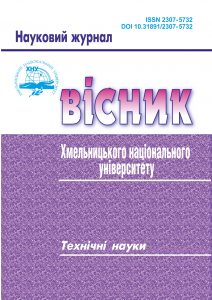APPLICATION OF SYNTHETIC MAGNETITE OBTAINED FROM SOLUTIONS CONTAINING IRON SULFATE AS A SORBENT FOR REMOVAL OF CHROMATES FROM WASTEWATER
DOI:
https://doi.org/10.31891/2307-5732-2023-329-6-111-117Keywords:
chromates, magnetite, iron sulfate-containing solutions, waste water, sorption, recoveryAbstract
The problem of decontamination of chromate-containing wastewater of galvanic industries is related to the extreme toxicity of these compounds, as they are among the most environmentally dangerous with general toxic, cumulative, allergenic, carcinogenic, and oxidizing effects. Chromium (VI) compounds are not hydrolyzed during pH adjustment, and therefore cannot be extracted by traditional reagent methods. For the disposal of chromate-containing wastewater, it is necessary to separately provide for the process of chromate recovery. In most cases, the process is carried out with the help of chemical reagents and is accompanied by water salinization and the formation of a significant amount of highly dispersed sediments, which are difficult to separate from water. Among the iron compounds with magnetic properties, magnetite Fe3O4 is the most suitable for wastewater treatment, which has significant advantages: rather simple formation during precipitation of a mixture of Fe (II) and Fe (III) salt solutions, as well as stability in water in a wide pH range. Magnetite can be obtained from spent steel pickling solutions, the reserves of which in Ukraine amount to millions of cubic meters and the disposal of which is a separate acute environmental problem. The results of research on the extraction of chromates from wastewater using highly dispersed sorbents with magnetic properties obtained by precipitation from a mixture of iron (II) and iron (III) sulfate solutions are given іn work. It was established that the maximum efficiency of chromate removal occurs when using magnetite with K=[Fe2+]:[Fe3+]=2. It was determined that with an increase in the concentration of chromates in the solution and the temperature of the process, the efficiency of chromium (VI) extraction increases with increasing K. It was established that along with the reduction processes in the solution, the formation of poorly soluble chemical compounds with the participation of chromates and the sorption of chromates by surface particles of Fe(OH)3. A technological scheme for purifying water from chromates with synthetic magnetite is proposed. It is advisable to use the spent sorbent in metallurgy to neutralize carbon monoxide in flue gases.

